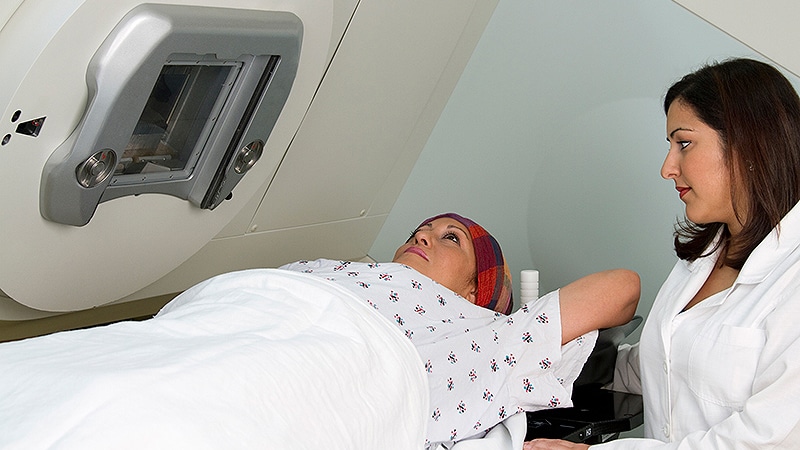Physicians often fail to detect symptoms of toxicity in women undergoing breast radiotherapy, a new analysis suggests.
The study found that more than half of women with breast cancer experienced at least one substantial symptom during radiotherapy that went under-recognized by their physician.
What’s “particularly worrisome,” the authors say, is that under-recognition of symptoms, including severe pain, pruritus, edema, and fatigue, was most common in patients of racial and ethnic minority groups and younger patients.
The study was published online April 21 in JAMA Oncology.
Toxic effects of cancer therapy can impair patients’ quality of life. Recognizing these symptoms means patients can receive supportive care sooner. In addition, integrating more information about treatment-related symptoms into clinical trials and data registries can help physicians make better treatment decisions.
To investigate under-recognition of symptoms, Reshma Jagsi, MD, DPhil, Department of Radiation Oncology, University of Michigan, Ann Arbor, and colleagues compared patient-reported outcomes among women who received breast radiotherapy after lumpectomy to the physician-assessed Common Toxicity Criteria for Adverse Events (CTCAE).
The team focused on four radiotherapy-related symptoms — moderate/severe pain, pruritus, edema, and fatigue — based on 9868 patient-reported symptoms and 37,593 independent paired observations from patient and physician reports. Physicians under-recognized a symptom when, for instance, a patient reported moderate pain (score, 4 – 6) that a physician graded as 0 (absent) on the CTCAE or when a patient reported severe pain (score, 7 – 10) that a physician graded as 1 or less.
The researchers found that physician under-recognition of one or more symptoms occurred at least once during radiotherapy in more than half of patients (53.2%).
More specifically, physicians under-recognized patient-reported moderate or severe pain in 31% of cases (2094 of 6781), frequent pruritus and edema in 37% (748 of 2039) and 51% (2309 of 4492) of cases, respectively, and substantial fatigue in 19% (390 of 2079).
On multivariate analysis, factors independently associated with under-recognition of symptoms were Black race (odds ratio [OR], 1.56; P < .001) and other nonwhite race (OR, 1.52; P = .01).
Symptom under-recognition was also associated with younger age. Patients 50 years or younger (OR, 1.35; P < .001) and those 50 to 59 years (OR, 1.19; P = .02) were more likely to have their symptoms downplayed than patients aged 60 to 69 years.
Patients treated by a male physician (OR, 1.54) and those who received conventional fractionation (OR, 1.26) also had a higher likelihood of symptom under-recognition.
While the findings show that physicians “systematically miss substantial symptoms in certain patients,” the authors note that this gap in communication can be remedied.
“Improving symptom detection may be a targetable mechanism to reduce disparities in radiotherapy experiences and outcomes,” the authors write. Jagsi and colleagues advise all physicians to “inquire directly about potential toxic effects in detail with all patients to avoid missing symptoms they might help to mitigate.”
Support for the study was provided by Blue Cross Blue Shield of Michigan, which supports the Michigan Radiation Oncology Quality Consortium, and by the Susan G. Komen Foundation. Jagsi received grants from Blue Cross Blue Shield of Michigan for the Michigan Radiation Oncology Quality Consortium and from the Susan Komen Foundation during the conduct of the study; grants from the National Institutes of Health (NIH), Genentech, and Doris Duke Foundation; personal fees from Greenwall Foundation, Dressman, and others; and stock options in Equity Quotient outside the submitted work.
JAMA Oncol. Published online April 21, 2022. Abstract
For more news, follow Medscape on Facebook, Twitter, Instagram, and YouTube.
Source: Read Full Article
